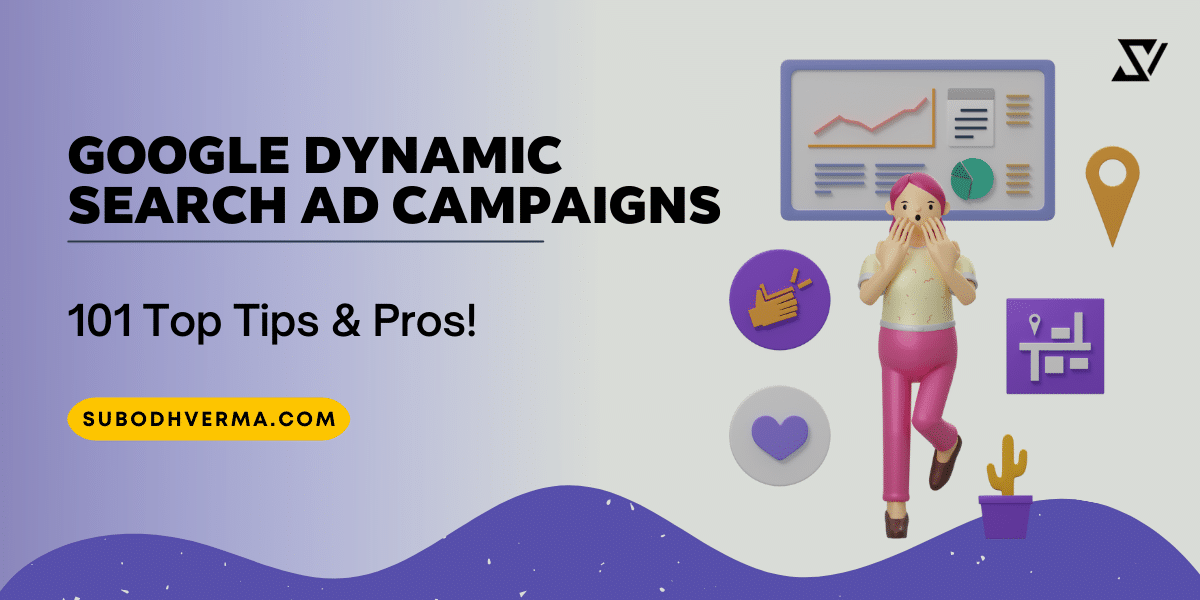The internet is a powerful tool for marketers and advertisers. It provides access to an infinite amount of information, which they can use to create successful campaigns. Search engine marketing (SEM) has become one of the most important digital marketing channels for brands who want their products or services seen by as many people as possible. With Google Dynamic Search Ads, businesses can use this same platform for SEM campaigns that focus on users’ search queries at any given time.
Dynamic search ads are an automated bidding system that automatically adjusts bids in response to the visitor’s query. These ads can be an excellent way for advertisers to get their products in front of potential customers who have been searching for similar items on Google Shopping. This post will take a look at Dynamic Search Ads and provide 101 tips, pros, and cons so you can decide if this is a good option for your advertising campaigns.
Let’s get you started!
What are Google Dynamic Search Ads?
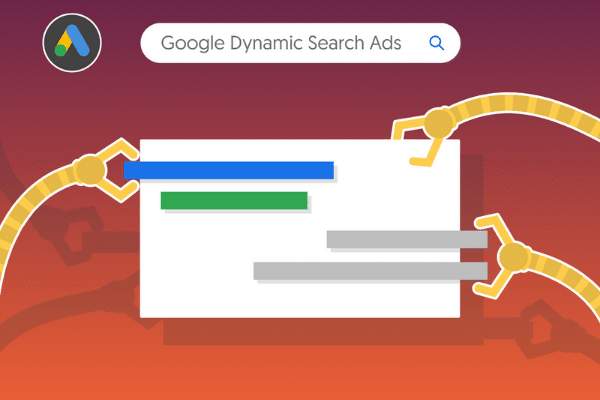
These ads generally show at the top of search results pages and can match the content of the organic results.
Google used to demonstrate text ads on its search engine results pages (SERPs) based on bids from advertisers and how well they could customize those ads for current customer searches. The problem with this bidding system is that marketers weren’t getting high-quality shoppers due to these bids because none of those landing pages carried any specific information about those customers. But by now offering dynamic display ads, they could provide more relevant products and services than ever before!
Thanks to artificial intelligence, Google Dynamic Search Ads change in real-time to match what people search for. The more you think about it, the more powerful this concept becomes.
For example, if you’re a marketing director trying to sell mattresses and potential customers search for “what stores carry mattress brands,” your ads might be about where to go to buy beds. On the other hand, if they look for information on the benefits of foam vs spring mattresses, then your ad might be about comparing mattress types and materials used in each one. These details can save you hours of research and planning each day, but they also take loads of work off y plates so that you can focus on better things!
Also read: 15 Google Ads Extensions To Improve Your Google Ads Campaign!
Pros Of Dynamic Search Ads
Display Relevant Headline
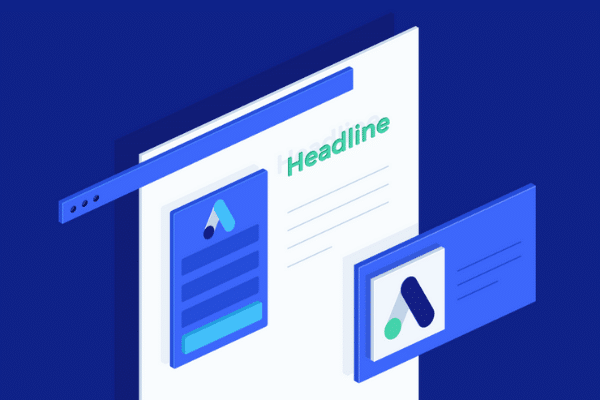
A dynamic search ad means that your ad will come up with a headline totally based on the search query of the person who typed in your keyword phrase into Google or any other search engine. When you use this type of system, you can change what you advertise to people depending on what they’re looking for and how their minds might be moving about it. It also ensures that your ad will never go out of date; as long as people are still looking up relevant information, you’ll find yourself getting more clicks and conversions than ever before.
Fill Bridge In Keyword-based Campaigns
The keyword insertion feature allows you to fill in the keywords found in your ad campaign with dynamic search ads, increasing relevancy, click-through rates, and conversions.
Sometimes there’s a gap between keywords and advertising messages – not necessarily a negative one under every circumstance, but one that can dwindle the power of your ad. Dynamic search ads allow you to match keywords and ads together to make sure that all of your campaigns can remain as focused as possible at all times. It means better results and less time having to switch up your methods because you’ve failed to meet an advertising goal.
Expand Your Ad Campaign Reach
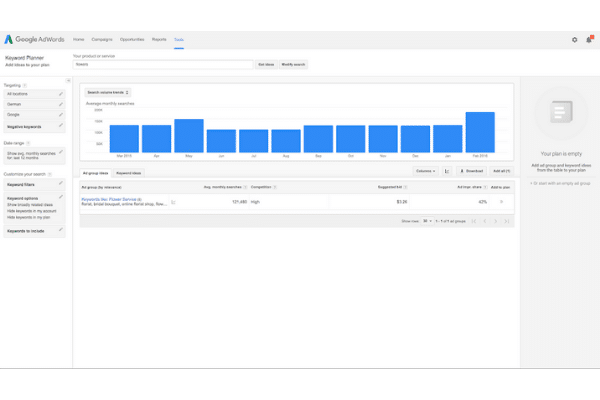
By allowing Google to automatically generate dynamic search ad content using the specific search query, you’re expanding the reach and power of your advertising campaign. These types of ads will appear for a wider variety of keywords than just those that you chose initially – this leads to higher click-through rates and more impressions, which can help increase traffic and conversions even further than before.
Automatic Updates
Since dynamic search ads automatically update their headlines, this ensures a smooth transition from one advertising campaign to another without having to meddle with the specific headline to adjust it based on the new information you’re going into. You can take advantage of these ads for everything from PPC campaigns and website conversions to your banner advertisements and virtually everywhere else. It would help if you had an extra boost of ad success.
Capture Quality Traffic

Finally, using dynamic search ads has been shown to draw in more qualified clicks than other forms of advertising because of how closely they match up with people’s general interests at any given time. Instead of just getting random visitors who might or might not be looking for what you’re featuring, you’re going to be able to get in front of people who are already highly interested and on the hunt for what your site delivers.
5 Best Practices Optimizing Dynamic Search Ad Campaign
To be successful with dynamic search ads, you need to have a thorough understanding of your business. Being able to match targeted keywords to high performing landing pages is an art form. Fortunately, some best practices will help optimize your dynamic search campaigns and help you stay ahead of the competition.
Let’s look at them!
Target Similar Audiences
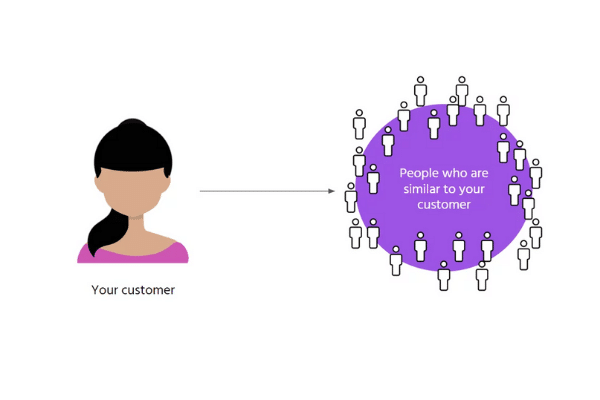
Similar audiences will have similar interests and buying habits as those who first opt-in to receive your emails. Thus, they’re more likely to convert.
You can either add Dynamic Search Ad campaign audiences from your email list or create a Dynamic Search Ad campaign audience based on people who have visited the website in the past 30 days.
Create Dynamic Search Ads for similar audiences by going into Audiences, click Edit and select “add another targeting method”. Click Advanced options and choose Dynamic search ad group. Select all the demographics that apply to your Dynamic Search Ad Campaigns. Once selected, these criteria will apply to each Dynamic Search Ad Campaign you have running in this dynamic search ad group.
Dynamic remarketing audiences allow you to target people who have already visited your website – this includes visitors who viewed specific products or pages on your site and those who added items to their shopping carts but did not complete a purchase. This targeting option takes data from Google Analytics, DoubleClick Campaign Manager, Google Ads, Dynamic Search Ads and Dynamic Remarketing. This highly segmented target audience will make your ads more relevant to each user, which will improve click-through rates (CTRs) and lower your cost per click.
Use Automated Bid Strategies
The biggest mistake that people make with Dynamic Search Ads is not using automated bid strategies. AI-powered bidding allows you to optimize your bids in real-time based on the performance of both keywords and ads. You can adjust bids for specific devices or locations at any given moment, which can help you convert more leads or sales from Dynamic Search Ads!
Automated bid strategies allow advertisers to establish a successful bidding strategy optimized over time according to two key factors that influence performance: bid strategy and conversion tracking.
Automated Bid Strategies also optimize campaign budgets for advertisers, so you can spend more on the keywords that work while adhering to a budget. This way, you will only have to worry about setting up your automated bid strategies once, then let Google take care of the rest.
Also read: 16 Reasons How Automating Your Bid Contributes To A Successful Google Ads Campaign!
Increase Bids On Broad Keywords
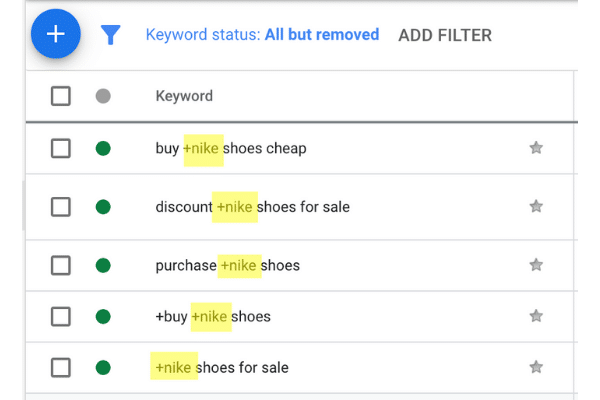
Once you have identified high performing landing pages for each keyword in your account, make sure to increase bids on broad keywords to improve your chances of showing for these terms.
Broad match modifier keywords are best used to target multiple variations of your keyword phrase to get more impressions for your ads. However, because broad match modifiers are less specific than other match types, increasing bids accordingly for higher click-through rates (CTR) is essential.
Optimize Frequency Capping Limit
Frequency capping is a feature that enables advertisers to limit the number of times each user sees an ad over a given period. The frequency cap only applies within each campaign and not across multiple drives. For example, if you set up two separate campaigns targeting different audiences, users who have already seen the ad in your first campaign will still see it in your second campaign.
This setting will help prevent users from being annoyed by multiple ads popping up in their search results. Google offers two frequency capping settings: “Show up to” and “Limit when the same person sees your ad more than.” The latter is a much better choice for dynamic remarketing campaigns because it prevents users from seeing an ad that they have already seen in the past. Although the limit may be higher for some ads, you can rest assured that each user will see your ads less frequently – maximizing click-through rates (CTRs) while keeping costs per click low.
Test Continuously

Finally, set aside time every day to test new keywords and ads. Use A/B testing software like Optimizely or Visual Website Optimizer to track CTRs and cost per click of new creative elements such as thumbnail images, long-form and short-form text. Use the data you gather from these split tests to determine which parts work best for your business. It will help determine which audience and targeting method work most effectively for your business.
When setting up your Dynamic Search Ad Campaigns, it’s essential to test different audiences, targeting methods, and bid strategies to find out what performs best. You can use Google Analytics or Adobe Analytics to measure campaign performance and determine which audience and targeting method work most effectively for your business.
Wrapping Up!
Dynamic search ads are an excellent way to reach your customers. They allow you to use data about what they’re searching for to show them relevant content that will help convert their intent into sales. The 101 top pro-tips I’ve provided should give you a head start on optimising these campaigns and getting the most out of your investment in Google’s advertising platform.
But if this sounds intimidating or like something you don’t have time for – let me know!
I would be happy to take care of managing your dynamic search ad campaign, so all you need to worry about is spending more time engaging with potential buyers online instead of stressing over updates and tweaks.
Also, follow me on my social channels to stay updated on the latest tips & tricks of Google Ads Campaigns!
